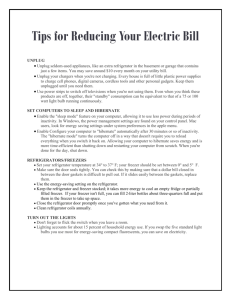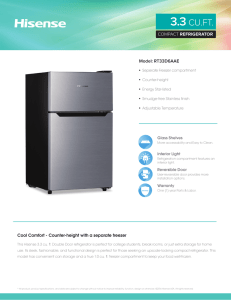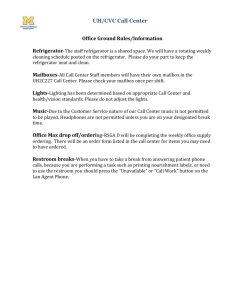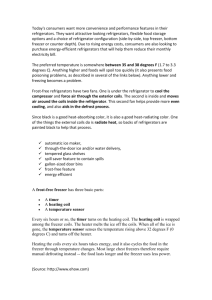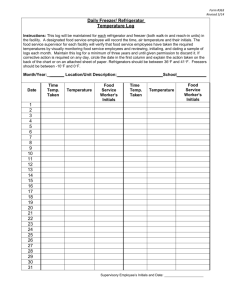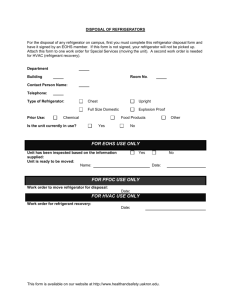Your Barn Fridge
advertisement
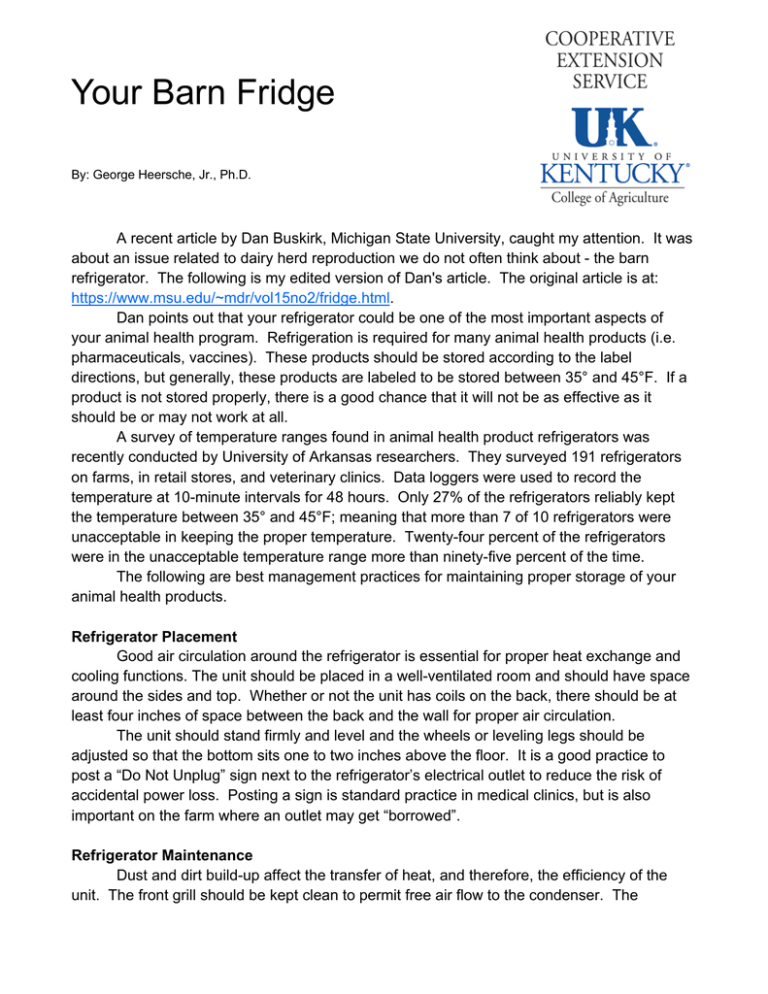
Your Barn Fridge By: George Heersche, Jr., Ph.D. A recent article by Dan Buskirk, Michigan State University, caught my attention. It was about an issue related to dairy herd reproduction we do not often think about - the barn refrigerator. The following is my edited version of Dan's article. The original article is at: https://www.msu.edu/~mdr/vol15no2/fridge.html. Dan points out that your refrigerator could be one of the most important aspects of your animal health program. Refrigeration is required for many animal health products (i.e. pharmaceuticals, vaccines). These products should be stored according to the label directions, but generally, these products are labeled to be stored between 35° and 45°F. If a product is not stored properly, there is a good chance that it will not be as effective as it should be or may not work at all. A survey of temperature ranges found in animal health product refrigerators was recently conducted by University of Arkansas researchers. They surveyed 191 refrigerators on farms, in retail stores, and veterinary clinics. Data loggers were used to record the temperature at 10-minute intervals for 48 hours. Only 27% of the refrigerators reliably kept the temperature between 35° and 45°F; meaning that more than 7 of 10 refrigerators were unacceptable in keeping the proper temperature. Twenty-four percent of the refrigerators were in the unacceptable temperature range more than ninety-five percent of the time. The following are best management practices for maintaining proper storage of your animal health products. Refrigerator Placement Good air circulation around the refrigerator is essential for proper heat exchange and cooling functions. The unit should be placed in a well-ventilated room and should have space around the sides and top. Whether or not the unit has coils on the back, there should be at least four inches of space between the back and the wall for proper air circulation. The unit should stand firmly and level and the wheels or leveling legs should be adjusted so that the bottom sits one to two inches above the floor. It is a good practice to post a “Do Not Unplug” sign next to the refrigerator’s electrical outlet to reduce the risk of accidental power loss. Posting a sign is standard practice in medical clinics, but is also important on the farm where an outlet may get “borrowed”. Refrigerator Maintenance Dust and dirt build-up affect the transfer of heat, and therefore, the efficiency of the unit. The front grill should be kept clean to permit free air flow to the condenser. The condenser coils should be cleaned regularly with a brush or vacuum cleaner to remove dirt and dust accumulation. Door seals should be washed with soapy water. Check and clear the drain tube with a pipe cleaner as necessary. Regularly check the integrity of the door gaskets. They should not be torn or brittle and there should be no gaps between the gaskets and the body of the unit when the doors are closed. The “paper test” can be used to check the condition of the gaskets. If a piece of paper can slip between the gasket and the body, the seal is not tight enough and requires adjustment of the door hinges or replacement of the gasket. Temperature Monitoring Refrigerator and freezer thermostats are marked in various ways, but in general, thermostats show levels of coldness rather than temperature. The only way to know the temperature inside the unit is to measure it with a calibrated thermometer. Thermometers designed for accurately reflecting the temperature of a refrigerator generally have a fluid filled bulb or bottle. If temperature fluctuations are a concern, “min-max” thermometers are available that record low and high temperatures. The thermometer should be placed in the center of the compartment away from the coils, walls, floor, and fan in order to obtain a true reading of the temperature. In the refrigerator, the thermometer should be placed on the middle shelf, adjacent to the vaccine, or hanging down from the upper shelf. In the freezer, the thermometer should be suspended from the ceiling of the compartment or placed on a box or some other item so that it is in the middle of the compartment off the floor. Storing Animal Health Products Store ice packs in the freezer and large jugs of water in the refrigerator along with the animal health products. This will help maintain a stable, cold temperature in case of a power failure or if the refrigerator or freezer doors are opened frequently. Store the water bottles against the inside walls and in the door racks. Store the frozen packs along the walls, back, and bottom of the freezer compartment and inside the racks of the freezer door. Sufficient freezer packs should be stored in preparation for transport or for a power outage. Frequent opening of the refrigerator unit doors can lead to temperature variations inside, which can reduce vaccine efficacy. For this reason, you should not store food or beverages in the refrigerator or freezer. In addition, do not store animal health products in the door shelves. These shelves are subject to greater temperature fluctuation than the main compartment. Health Product Refrigerator Checklist: Unit is placed with good air circulation “Do Not Unplug” sign is next to unit’s outlet Unit motor and coils are clean Door gaskets maintain tight seal Unit maintains temperature at 35° to 45°F Thermometer is monitored regularly Food or drinks are not in the unit Products in center of unit, not in door Ice packs in freezer, water jugs in refrigerator Educational programs of Kentucky Cooperative Extension serve all people regardless of race, color, age, sex, religion, disability, or national origin.

